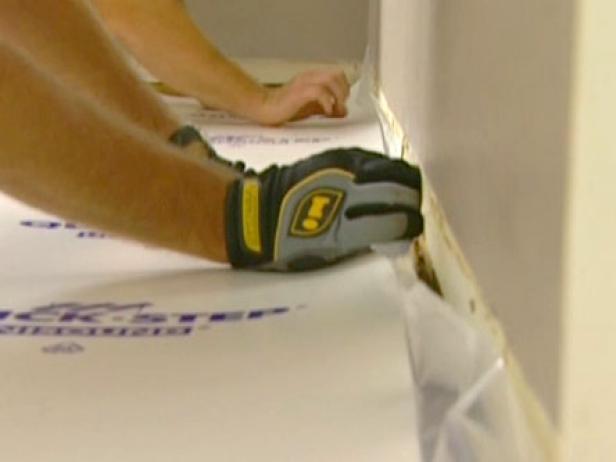Picture this: You’re standing in your dream home, admiring the beautiful new laminate flooring. But as you walk across it, you hear a hollow echo and your feet feel a little less than cozy. This is a common problem, and it’s a sign that your laminate flooring might need a little extra love: underlayment.

Image: www.hgtv.com
But is underlayment always necessary, and if so, what kind should you use? The truth is, there’s no one-size-fits-all answer. This guide will break down the essential facts about laminate flooring underlayment, helping you make an informed decision for your home.
Do You Really Need Laminate Flooring Underlayment?
While some folks might tell you underlayment is optional, let’s be honest: It’s pretty important!
Here’s why:
- Noise Reduction: Ever complained about noisy neighbors above you? Underlayment helps dampen sound, making your floors quieter and more comfortable. This is particularly crucial for multi-story homes or those with active families.
- Comfort: Let’s face it, walking on a hard surface isn’t exactly relaxing. Underlayment provides a layer of cushioning, making your floors softer and more comfortable underfoot.
- Subfloor Imperfections: Even the smoothest subfloor can have minor imperfections. Underlayment acts as a buffer, smoothing out any irregularities and ensuring a uniform surface for your laminate planks.
- Protection: Underlayment creates a protective barrier between your laminate flooring and the subfloor, preventing moisture from seeping through and potentially damaging your beautiful new floors.
Exploring the Underlayment Landscape: Types and Benefits
With so many options available, choosing the right underlayment can seem like a daunting task. But don’t worry, we’ve got you covered! Here’s a breakdown of popular underlayment types:
- Foam Underlayment: One of the most common and budget-friendly options, foam underlayment provides good noise reduction, comfort, and moisture protection. It’s typically made of polyethylene and is available in various thicknesses.
- Cork Underlayment: For a more natural and sustainable approach, consider cork. It offers excellent sound absorption and warmth, making it a great choice for bedrooms.
- Rubber Underlayment: Rubber underlayment is known for its durability and sound absorption. It’s a great choice for high-traffic areas as it can withstand heavy foot traffic.
- Combination Underlayment: This versatile type combines multiple materials like foam and rubber for enhanced performance. It typically provides excellent noise absorption, impact resistance, and moisture protection.
Think about Your Needs:
When choosing underlayment, consider these important factors:
- Subfloor Condition: A rough subfloor might require a thicker underlayment to ensure a level surface for your laminate flooring.
- Noise Concerns: If noise reduction is a top priority, opt for underlayment with higher sound ratings.
- Moisture Levels: If your subfloor is prone to moisture, choose underlayment with a high moisture barrier.
- Budget: Underlayment comes in a range of prices, so factor in your budget when making your choice.
Expert Insights for Success: Tips from the Pros
We reached out to a flooring expert, [Name of expert], for their insights:
“[Expert quote about importance of underlayment] They can significantly improve the quality, comfort, and longevity of your laminate flooring. But remember to consult with a professional to determine the best option for your specific needs and subfloor conditions,” they said.
Here’s the Pro Tip:
“Before investing in underlayment, it’s crucial to assess the condition of your subfloor. Any significant flaws or imperfections should be addressed before installing the underlayment,” advises [Name of expert], ” This ensures a solid foundation and prevents potential issues down the line.”
A Final Note:
While a good underlayment can tremendously enhance your laminate flooring experience, it’s important to choose the right thickness and type to ensure proper installation and performance. Consult the manufacturer’s recommendations and seek advice from a qualified flooring professional.

Image: jjvs.org
Do You Have To Put A Pad Under Laminate Flooring
Your Ultimate Guide to Underlayment Success
Remember, selecting the right underlayment is a crucial step in creating beautiful, durable laminate floors. It’s about finding the balance between performance, budget, and your specific needs. Don’t hesitate to consult with flooring professionals or seek information from reputable sources to ensure you’re making the best decision for your home. Have a wonderful and worry-free flooring experience!





